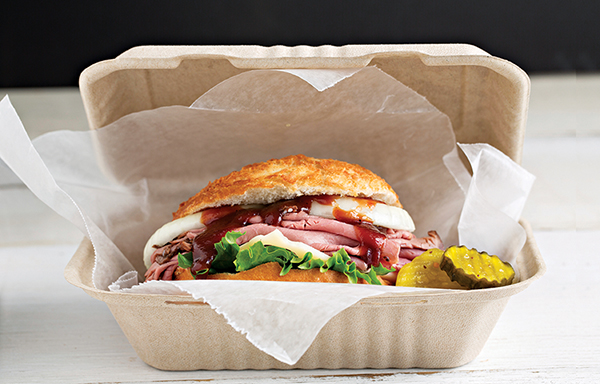It happened in the blink of an eye.
I answered the phone at my restaurant as I did about a hundred times a day. However, on this day I was asked a question I’d never heard before.
“We’re looking for a local restaurant to cater breakfast and lunch every Tuesday and Thursday for the next six months. It’d be for 20 people. We can spend $10 a head for breakfast and $15 for lunch. Is this something you can handle?”
“Ahh … yes! Absolutely!” I responded. The fact that I’d never catered a single corporate meal was secondary to the numbers I was furiously pounding into my calculator.

$10 (breakfast) + $15 (lunch) = $25
$25 x 20 people = $500
$500 x 2 (Tuesday and Thursday) = $1000
$1000 x 25 (6 months) = $25,000
So began my transition from restaurateur to corporate drop-off caterer. Little did I know that phone call would be the catalyst that transformed a struggling restaurant into a nearly $2-million-a-year flourishing company. The concept of repeat business may not have been a conscious pursuit at the time, but it certainly became one.
Those early years encompassed a lot of trial and error while we found our footing.
The most significant lesson learned was the benefit of offering “tastings” as the centerpiece of our sales strategy. Tastings—those pre-arranged, complimentary food samples delivered to the decision makers of local companies—were the engine that spurred our growth. It appears that the concept of a “free lunch” will never go out of style.
Tastings are a process. They involve acquiring lists of companies, making cold calls, gathering contact information, qualifying potential new clients, sending and emailing menus, scheduling and executing them, and systematically following up. A well-rounded marketing program also includes a coordinated fusion of social media, regular promotions, in-house merchandising, and professional packaging designed to interlink all of these components.
After two decades in the trenches, these are some tried-and-true facts about building a corporate drop-off catering division through tastings:
I know this much is true
One: Some of the most universal industries to target are venture capital, consulting, pharmaceutical, life sciences, IT training, law firms, and colleges and universities.
Two: It takes about 10 cold calls to get one prospect. (A prospect is a company that orders frequently enough to qualify for a tasting.)
Three: It takes about 200 cold calls to schedule 20 tastings.
Four: On average, 20 tastings are going to generate 10 new clients (repeat business), five new customers (order periodically), and five duds (never order).
Bear in mind these figures are variable. There is no magic wand, and there are no absolutes. You may present 20 tastings that convert into 15 clients, but the next round of 20 may generate only five clients.
The most overlooked component of the process is follow-up work after the tasting. Shifting a prospect’s ordering routine can be challenging.
Back for more?
Consider this scenario: You’re in your office at the end of a long day. An email arrives from a new produce company that wants your business. You open the email (which is no guarantee) to find an attractive promotional flyer with appealing photos and reasonable price points. You’re always on the lookout for better products and pricing, but you’re tired and ready to go home. You think, “Maybe I’ll give them a call tomorrow.” You might, but chances are you won’t. It’s not that you aren’t interested, but as usual, you have a dozen other issues percolating.
This is the equivalent of you emailing or sending a menu to a prospect and sitting by the phone hoping the prospect will call.
What would it take for you to actually place an order with the new produce company? A follow-up call or calls? A representative visiting you—perhaps with some free samples? Reference checks?
Imagine you place an order and are pleased. Will you order a second time? Or is it possible that something as insignificant as having to search for the company’s phone number or filling out a credit application will stop you? The point is, even after a successful first delivery, the produce company will probably have to continue to court you for your continued business.
Expect the same challenges when you are pursuing new clients. You are an unknown. Ordering from a new vendor can feel like a time-consuming hassle. You have to give your prospect a reason to give your company a shot. Corporate catering is a golden opportunity to dramatically increase your revenue stream while incurring minimal additional expenses.
Furthermore, industry experts report that corporate catering is in demand and project sustained growth over the next five to 10 years.
If you truly commit to getting your corporate catering business off the ground or taking it to the next level, nothing is stopping you. But remember that commitment means staying loyal to what you said you were going to do…long after the mood you said it in has left you.



